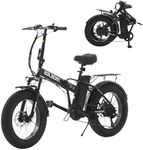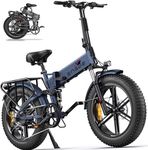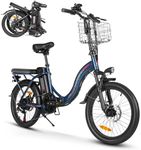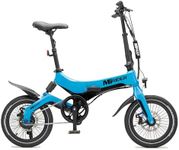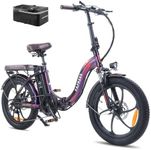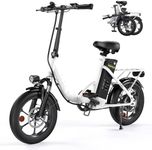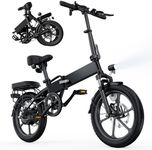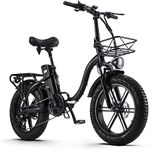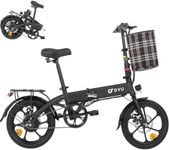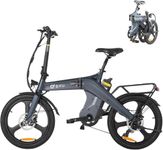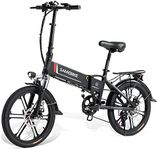Buying Guide for the Best Electric Folding Bikes
Electric folding bikes are a fantastic solution for those who need a compact, portable, and efficient mode of transportation. They combine the convenience of a folding bike with the power of an electric motor, making them ideal for urban commuting, traveling, or simply saving space at home. When choosing an electric folding bike, it's important to consider various specifications that will affect your riding experience, portability, and overall satisfaction with the bike. Understanding these key specs will help you make an informed decision that best suits your lifestyle and needs.Motor PowerMotor power, measured in watts, determines how much assistance the electric motor provides when you're pedaling. This is important because it affects the bike's ability to handle different terrains and inclines. Motor power typically ranges from 250W to 750W. A 250W motor is sufficient for flat city rides and light assistance, while a 500W motor offers more power for moderate hills and faster speeds. A 750W motor is ideal for steep hills and heavier loads. Choose a motor power that matches the terrain you'll be riding on and the level of assistance you desire.
Battery CapacityBattery capacity, measured in watt-hours (Wh), indicates how much energy the battery can store, which directly affects the range of the bike. A higher capacity means you can travel further on a single charge. Battery capacities typically range from 250Wh to 750Wh. A 250Wh battery might be sufficient for short commutes or occasional use, while a 500Wh battery is better for longer rides or daily commuting. A 750Wh battery is suitable for extended trips or if you plan to use the bike frequently without charging often. Consider your typical riding distance and frequency to choose the right battery capacity.
Folding MechanismThe folding mechanism determines how easily and quickly you can fold and unfold the bike. This is crucial for portability and convenience, especially if you need to carry the bike on public transport or store it in a small space. There are various folding mechanisms, such as mid-fold, vertical fold, and triangle hinge. Mid-fold is common and offers a balance between ease of use and compactness. Vertical fold is quicker but may not be as compact. Triangle hinge is very compact but can be more complex to operate. Choose a folding mechanism that aligns with how often and where you plan to fold the bike.
WeightThe weight of an electric folding bike affects its portability and ease of handling. Lighter bikes are easier to carry and maneuver, especially when folded. Electric folding bikes typically weigh between 30 to 60 pounds. A bike on the lighter end is ideal if you need to carry it frequently or have limited strength. Heavier bikes may offer more features or a sturdier build but can be cumbersome to transport. Consider your ability to lift and carry the bike, as well as how often you'll need to do so, when choosing the right weight.
Wheel SizeWheel size impacts the ride quality and compactness of the bike when folded. Common wheel sizes for electric folding bikes range from 16 to 20 inches. Smaller wheels, like 16 inches, make the bike more compact and easier to store, but they may provide a bumpier ride. Larger wheels, like 20 inches, offer a smoother ride and better stability but result in a slightly larger folded size. Consider the balance between ride comfort and portability when selecting the wheel size that best fits your needs.
Frame MaterialThe frame material affects the bike's weight, durability, and cost. Common materials include aluminum, steel, and carbon fiber. Aluminum is lightweight and resistant to rust, making it a popular choice for folding bikes. Steel is heavier but offers excellent durability and a smoother ride. Carbon fiber is very light and strong but tends to be more expensive. Choose a frame material based on your priorities for weight, durability, and budget, as well as how you plan to use the bike.
